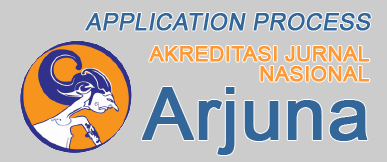Unveiling the Impact of Leadership on Community Engagement in Cicadas Village
DOI:
https://doi.org/10.62394/scientia.v3i1.89Keywords:
leadership, community participation, engagement, cicadas village, quantitative methodAbstract
This study aims to investigate the impact of village government leadership on enhancing community participation in development planning in Cicadas Village, Bogor Regency. The research utilized a quantitative method with a population of 234 households. Sampling was conducted through incidental sampling using the Slovin Formula, resulting in a sample size of 148 households. Data collection involved observation, questionnaires, and documentation. Data analysis employed frequency tabulation and simple regression analysis using IBM SPSS 23.0 for Windows. The findings indicate that village government leadership significantly influences community participation in development planning in Cicadas Village, evidenced by a calculated t-value of 8.778 and a significance value of 0.000 < 0.05, thus rejecting Ho and accepting Hi. Consequently, there exists a strong correlation between village government leadership and the optimization of community participation in development planning. Better village government leadership correlates with increased community participation in development planning. This research is expected to serve as a guideline for village governments in rural development planning and to provide comprehensive insights into the importance of village government leadership and community participation optimization.
Downloads
References
Abelson, J., Forest, P.-G., Eyles, J., Smith, P., Martin, E., & Gauvin, F.-P. (2003). Deliberations about deliberative methods: issues in the design and evaluation of public participation processes. Social Science & Medicine, 57(2), 239–251.
Adam, F. (2005). Community participation in school development: Understanding participation in basic school performance in the Nanumba district of Ghana. The University of Bergen.
Ahmed Iqbal, Z., Abid, G., Arshad, M., Ashfaq, F., Athar, M. A., & Hassan, Q. (2021). Impact of authoritative and laissez-faire leadership on thriving at work: The moderating role of conscientiousness. European Journal of Investigation in Health, Psychology and Education, 11(3), 667–685.
Amegayibor, G. K. (2018). Leadership styles and performance of employees at Ameen Sangari Company Limited, Cape Coast. University of Cape Coast.
Armeni, C. (2016). Participation in environmental decision-making: Reflecting on planning and community benefits for major wind farms. Journal of Environmental Law, 28(3), 415–441.
Blanchard, K. (2018). Leading at a higher level. Ft Press.
Bryson, J. M. (2018). Strategic planning for public and nonprofit organizations: A guide to strengthening and sustaining organizational achievement. John Wiley & Sons.
Butterfoss, F. D. (2006). Process evaluation for community participation. Annu. Rev. Public Health, 27, 323–340.
Cartwright, D. (2013). Influence, Leadership, Control1. In Handbook of Organizations (RLE: Organizations) (pp. 1–47). Routledge.
Chemers, M. (2014). An Integrative Theory of Leadership. Psychology Press. https://doi.org/10.4324/9781315805726
Coulibaly-Lingani, P., Savadogo, P., Tigabu, M., & Oden, P.-C. (2011). Factors influencing people’s participation in the forest management program in Burkina Faso, West Africa. Forest Policy and Economics, 13(4), 292–302.
Council, N. R. (2008). Public participation in environmental assessment and decision making. National Academies Press.
Famakinwa, M., Adisa, B. O., & Alabi, D. L. (2019). Factors influencing role performance of community leaders in rural development activities in Southwestern Nigeria. Acta Universitatis Agriculturae et Silviculturae Mendelianae Brunensis, 67(2).
Fry, L. W. (2003). Toward a theory of spiritual leadership. The Leadership Quarterly, 14(6), 693–727.
Ginter, P. M., Duncan, W. J., & Swayne, L. E. (2018). The strategic management of health care organizations. John Wiley & Sons.
Hasan, D. S. (2023). Assessing The Relationship between Transformational Leadership and Employee Performance in The Health Department of East Jakarta. PROCURATIO: Jurnal Manajemen & Bisnis, 2(2), 76–85.
Head, B. W. (2007). Community engagement: participation on whose terms? Australian Journal of Political Science, 42(3), 441–454.
Innes, J. E., & Booher, D. E. (2004). Reframing public participation: strategies for the 21st century. Planning Theory & Practice, 5(4), 419–436.
Irvin, R. A., & Stansbury, J. (2004). Citizen participation in decision making: is it worth the effort? Public Administration Review, 64(1), 55–65.
Kadiyono, A. L., Sulistiobudi, R. A., Haris, I., Wahab, M. K. A., Ramdani, I., Purwanto, A., Mufid, A., Muqtada, M. R., Gufron, M., & Nuryansah, M. (2020). Develop leadership style model for indonesian teachers performance in Education 4.0 era. Systematic Reviews in Pharmacy, 11(9), 363–373.
Kready, S. F. (2011). Organizational culture and partnership process: A grounded theory study of community-campus partnerships. Virginia Commonwealth University.
Lasker, R. D., & Weiss, E. S. (2003). Broadening participation in community problem solving: a multidisciplinary model to support collaborative practice and research. Journal of Urban Health, 80, 14–47.
Locke, E. A. (1999). The essence of leadership: The four keys to leading successfully. Lexington Books.
Paul, S. (1987). Community participation in development projects. World Bank Washington, DC.
Petts, J., & Leach, B. (2000). Evaluating methods for public participation: Literature review. Citeseer.
Phillips, S. D., & Orsini, M. (2002). Mapping the links: Citizen involvement in policy processes. Canadian Policy Research Networks Ottawa, ON.
Pogo, T. (2022). Pengaruh Kepuasan Kerja, Gaya Kepemimpinan, dan Komitmen Organisasional terhadap Turnover Intention Karyawan PT. Deporindo Telekomunikasi. PROCURATIO: Jurnal Manajemen & Bisnis, 1(1), 54-66.
Sangadji, Suwandi S., Febriyani E. Supriatin, Iin Marliana, Afkar, Andi Paerah, and Firdaus Y. Dharta. 2022. “Metodologi Penelitian.” OSF Preprints. July 5. osf.io/ywemh.
Sangadji, S. S. (2023). Sales Management Analysis and Decision Making. PROCURATIO: Jurnal Manajemen & Bisnis, 2(1), 39-42.
Sacavém, A., Cruz, R. V, Sousa, M., Rosário, A., & Gomes, J. S. (2019). An integrative literature review on leadership models for innovative organizations. An Integrative Literature Review on Leadership Models for Innovative Organizations, 1741–1751.
Sanoff, H. (1999). Community participation methods in design and planning. John Wiley & Sons.
Selman, P. (2004). Community participation in the planning and management of cultural landscapes. Journal of Environmental Planning and Management, 47(3), 365–392.
Siagian, S. P. (1991). Teori dan praktek kepemimpinan. Rineka Cipta. http://library.stik-ptik.ac.id/detail?id=21531&lokasi=lokal
Skelcher, C., & Torfing, J. (2010). Improving democratic governance through institutional design: Civic participation and democratic ownership in Europe. Regulation & Governance, 4(1), 71–91.
Sugiyono. (2017). Metode Penelitian Kuantitatif, Kualitatif, dan R&D. Alfabeta.
Thomas, D., & Paul C, S. (2008). Public participation in environmental assessment and decision making. National Academies Press.
Wampler, B., & McNulty, S. (2011). Does participatory governance matter. Exploring The.
Zikmund, William G. Babin, Barry J. Carr, Jon C. Griffin, M., Zikmund, W. G., Babin, B. J., Carr, J. C., & Griffin, M. (2014). Business Research Methods (8th ed.). South Western Cengage Learning.




















